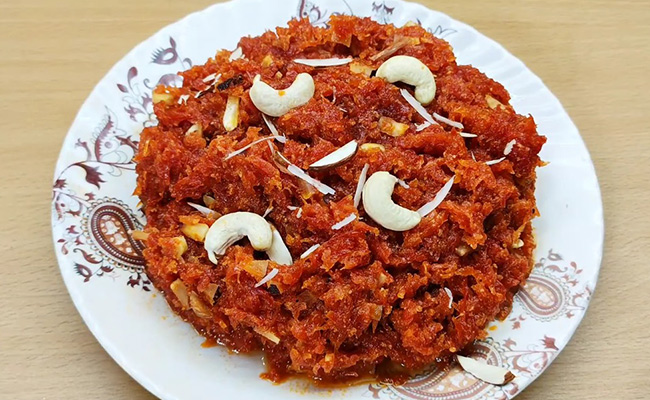In cultures around the world, the consumption of dessert after a meal is a longstanding tradition. Whether it’s a slice of cake, a scoop of ice cream, or a piece of fruit, dessert serves as the sweet finale to our dining experience. But have you ever wondered why we indulge in these sugary treats after already satisfying our hunger? The reasons behind this culinary practice are rooted in both biological and psychological factors, making dessert a delightful and meaningful part of the dining experience.
1. Evolutionary Biology:


From an evolutionary perspective, humans are wired to crave sweet foods. Our ancestors relied on high-calorie foods like fruits and honey to survive, as these provided a quick source of energy. Over time, this preference for sweetness became ingrained in our biology, leading us to seek out sugary treats, even after a full meal. Dessert, with its sweet and often indulgent flavors, satisfies this innate craving for sweetness, offering a pleasurable end to the dining experience.
2. Psychological Satisfaction:


Eating dessert goes beyond mere biological cravings; it also fulfills psychological needs associated with pleasure and reward. The anticipation of dessert throughout the meal can enhance our enjoyment of the main course, serving as a motivating factor to finish our plates. Dessert acts as a symbolic reward for completing the meal, signaling to our brains that we’ve accomplished a satisfying culinary experience.
3. Cultural Significance:


The practice of eating dessert after a meal is deeply rooted in cultural traditions and customs. In many cultures, dessert is seen as a symbol of hospitality and generosity, offered to guests as a gesture of goodwill. Desserts are also associated with celebrations and special occasions, adding an element of festivity to the dining experience. From the elaborate pastries of French cuisine to the delicate sweets of Japanese tea ceremonies, desserts play a central role in culinary traditions around the world.
4. Social Bonding:


Sharing dessert with others fosters social connection and strengthens interpersonal relationships. Whether it’s splitting a slice of pie with family members or enjoying a sundae with friends, dessert encourages communal eating and conversation. The act of sharing food, especially something as indulgent as dessert, creates a sense of camaraderie and shared experience, deepening social bonds and fostering positive feelings among diners. Choosing to eat dessert after the meal not only satisfies our sweet cravings but also fosters social connection and strengthens cultural traditions
5. Emotional Comfort:


Desserts are often associated with feelings of comfort and nostalgia. Many of us have fond memories of enjoying homemade cookies with loved ones or savoring a favorite dessert from childhood. In times of stress or sadness, indulging in a sweet treat can provide a temporary escape from reality and evoke feelings of warmth and happiness. Dessert serves as a form of emotional nourishment, offering solace and reassurance in times of need.
6. Sensory Pleasure:


The sensory experience of eating dessert adds to its appeal. Desserts delight our taste buds with a combination of sweet, creamy, and sometimes savory flavors, as well as various textures and temperatures. Whether it’s the rich decadence of chocolate cake or the refreshing tang of sorbet, desserts stimulate our senses and provide a sensory pleasure that enhances the overall dining experience.
7. Ritual and Routine:


For many people, eating dessert after a meal is simply part of their routine or daily ritual. Whether it’s enjoying a piece of dark chocolate after dinner or treating oneself to a scoop of gelato on a weekend outing, dessert serves as a comforting and familiar ritual that brings a sense of structure and predictability to our lives. This ritualistic aspect of dessert consumption adds a sense of continuity and stability to our daily routines.
8. Health Benefits:


While dessert is often associated with indulgence, it can also offer health benefits when consumed in moderation. Certain desserts, such as those made with fruits, nuts, and whole grains, can provide essential nutrients like vitamins, minerals, and fiber. Desserts made with dark chocolate, in particular, are rich in antioxidants and have been linked to various health benefits, including improved heart health and cognitive function. By choosing healthier dessert options, we can satisfy our sweet cravings while nourishing our bodies.
9. Seasonal Traditions:


Many desserts are closely tied to seasonal traditions and celebrations. From pumpkin pie at Thanksgiving to Gajar Ka Halwa in winter, desserts play a central role in holiday festivities and cultural rituals. These seasonal treats evoke a sense of nostalgia and connection to tradition, bringing families and communities together to celebrate special occasions and create lasting memories.
In conclusion, the practice of eating dessert after a meal is a complex interplay of biological, psychological, cultural, and social factors. From satisfying our innate cravings for sweetness to fostering social connection and providing emotional comfort, dessert serves a variety of functions beyond mere nourishment. Whether enjoyed alone or shared with others, dessert adds a sweet and meaningful dimension to the dining experience, making it a cherished tradition across cultures and generations. So, the next time you indulge in a decadent dessert after a meal, savor the experience and appreciate the myriad reasons why we love to save room for something sweet.





